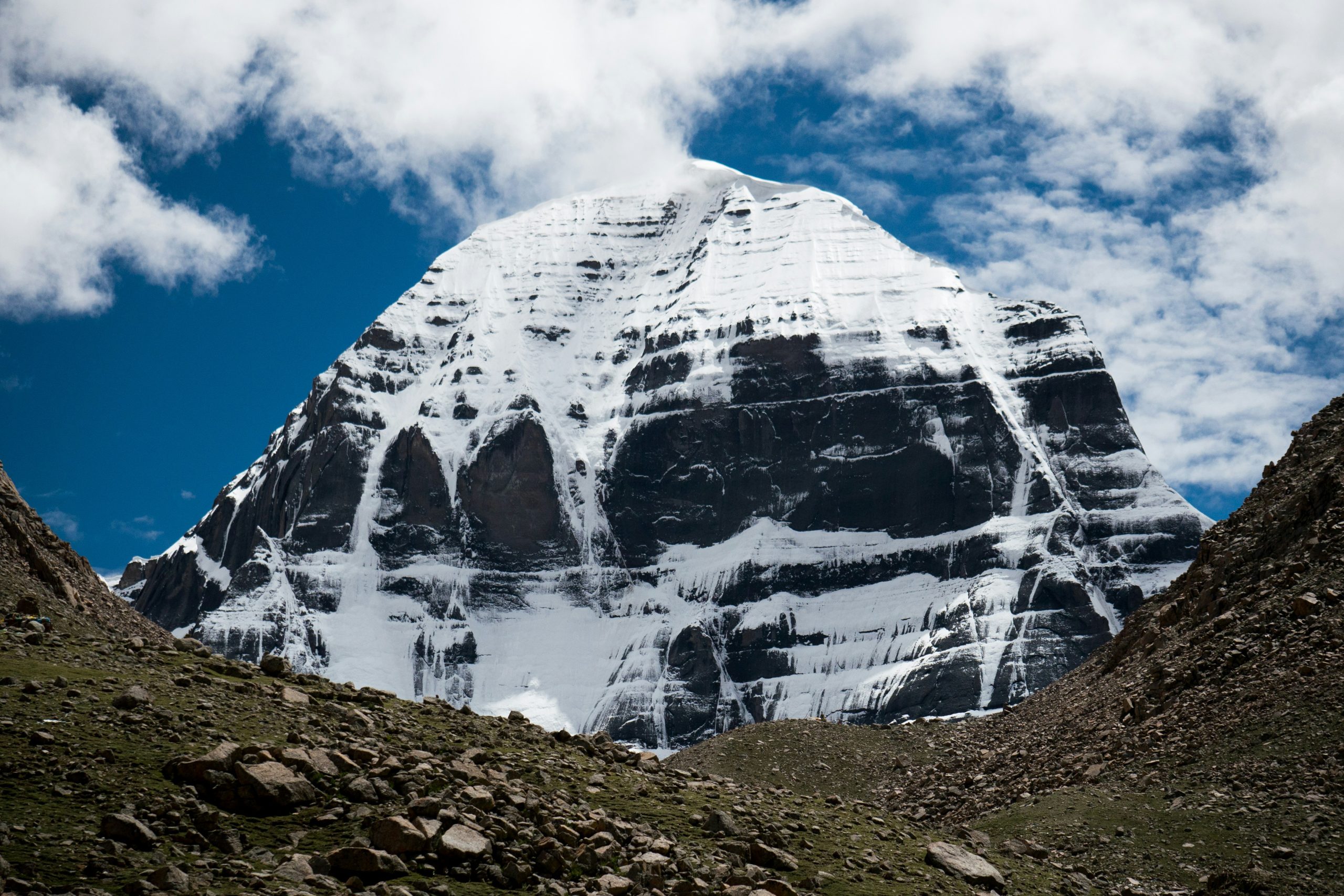The Hillary Step: Everest’s Legendary Obstacle and Its Changing Legacy

Table of Contents
Introduction: A Final Hurdle to the Roof of the World
The highest mountain: Everest is 8,848.86 meters (29,031.7 feet) high, and it has always been the centre of signifying the maximum of human will. Climbers who climb the mountain en route to the peak have to confront a variety of obstacles, and one of them was considered a dreaded last hurdle over decades, the Hillary Step.
The Hillary Step was a rock face that was almost vertical and had an inclination of roughly 60 to 70 degrees, and was situated right before the summit of Mount Everest. It was so steep that it was among the technically most demanding parts of the climb.
The Hillary Step was a near-vertical 12 m (40 ft) rock face just below the highest point. It was the final real challenge on the way to the top over the decades. Climbers and the historians of mountaineering are debating today whether it still exists, what has changed, and how this will now affect Everest ascents in the future.
So, how, when, and why did this iconic feature emerge, evolve, and remain famous?
I. The Origins of the Hillary Step
Named After a Legend

Those who named the Hillary Step after Sir Edmund Hillary were the first to be successful, reaching the top of Mount Everest back in 1953 together with Tenzing Norgay. This was 100 meters beneath the top of this steep rock face that they had to deal with. This was a very intimidating part that needed not only courage, but a technical climbing ability as well.
A Defining Feature
The Hillary Step came to be one of the most renowned features in high-altitude climbing with the flow of time. It was not only a physical obstacle but also a psychological one, on which the last major Step was taken before reaching the summit by the climbers.
II. What Made the Hillary Step So Challenging?

The Technical Terrain
Hillary Step was an icy rock face of the wall rising above 8,790 meters. It was narrow such that only one climber could go up or down at a time. Enduring use of fixed ropes, as well as the accompaniment of a Sherpa, was very essential to enable climbers to pass safely.
The Bottleneck Danger
It is a short, steep area that would often make any attempt at the summit take ages to go up and down. During the peak climbing periods of Everest, the Hillary Step proved to be a major bottleneck, making climbers wait in the death zone, which is a dangerous altitude where there is minimal oxygen.
III. Has the Hillary Step Disappeared?
The 2015 Nepal Earthquake
In April 2015, Nepal was hit by a strong earthquake of 7.8 magnitude. It triggered landslides, avalanches, and deformations in the Himalayas. Following the quake, a fair number of climbers started to report that the Hillary Step had collapsed or been altered drastically.
Evidence and Debate
The debate went on in the mountaineering community after photos were taken in 2016 and 2017. Others were saying that the Step had fallen away and that now there was only a slope of snow and rubble. Others contended that it was just covered over by ice and snow and not really missing. Even professional Sherpas had different opinions.
IV. Climbing the “New” Hillary Step: Easier or More Dangerous?
The Changed Landscape
Nowadays, the climbers have to face a stretch that resembles a slant rather than a vertical slab of rocks. Though this may sound better, it poses new dangers such as stones, unstable snow, and rockfall.
Route Adjustments
Guides and Sherpas have learned to change their rope-fixing tactics. Although the queues are shorter now, it still does not lose its status of extreme danger since climbers experience high altitude exhaustion and unstable surfaces that change every now and then.
V. The Role of Sherpas at the Hillary Step
Silent Heroes
Sherpas are essential to the success of every expedition that attempts to climb Mount Everest. Whether it is their ability to fix ropes on a famously tricky part of the mountain, the Hillary Step, or their courage in shepherding climbers through bottlenecks of people, it can be the difference between life and death.
Rope Fixing and Route Management
Preparation of a route up Everest has always played an important role in the hands of Sherpas, notably the team called the Icefall Doctors. Whether it’s the original Hillary Step or its altered version, they carry hundreds of meters of rope, fix anchors, and assess terrain stability — often in dangerous conditions.
VI. Beyond Rock and Ice: The Symbolism of the Hillary Step
More Than Just a Climb
The Hillary Step was, in a mental sense, a turning point for many of the climbers. It was where the doubts were crushed or conquered. It has been immortalized in books, in films, and in dreams.
Does Change Diminish the Climb?
Critics claim that Everest is now easier due to the changed Hillary Step. However, the majority of climbers will admit that Everest is a terribly dangerous task. It is not too late to be able to get to the top, but it requires stamina, training, and a lot of respect for the mountain.
VII. Everest’s Crowding and Safety Challenges
The Old Bottleneck
The narrow Hillary Step was where climbers in good weather slots were bashed in long queues. This made frostbite, altitude sickness, and even death more likely.
The Current Situation
The collapse may have lowered the technical difficulty, but it has not eliminated crowding. As the number of people who attempt Everest continues to increase each year, there is a greater need to control this through superior regulations and climber experience requirements.
The Grim Reality: Dead Bodies as Landmarks
Over 300 climbers have died during the Mount Everest expedition, with many of those tragedies occurring in the dangerous “death zone” above 8,000 meters — including near the Hillary Step. At such extreme altitudes, rescue or body recovery is nearly impossible due to lack of oxygen, freezing temperatures, and dangerous terrain.
As a result, many bodies remain on the mountain, preserved by the cold and visible along the climbing route. One of the most well-known examples is “Green Boots”, believed to be an Indian climber(Tsewang Paljor) who died in 1996. His body, wearing neon green mountaineering boots, became a grim landmark for those passing through the Northeast Ridge route. For years, climbers would rest near him — a chilling reminder of how deadly the mountain can be.
VIII. The Forces Behind the Transformation
Geological Fragility
The structure of Everest is formed of metamorphic and sedimentary rocks, which are very vulnerable to earthquakes and weathering. The earthquake of 2015 could probably loosen a very important part of the Hillary Step.
The Erosion of Time and Climate Change
The intense atmosphere on the high ground has eventually destroyed the scenery of Mount Everest over time, such as the Hillary Step. This leads to widening of cracks in rocks due to repetitive freeze and thawing, as well as the wind tending to erode the rock.
The melting of glaciers and the permanent ice fields continues at scary levels because the natural cement that used to hold loose rocks together is being washed away as temperatures in the world increase.
This melting also weakens the snow and ice that hold the rock faces, resulting in the risk of collapses as well as rockfall. Together, these natural forces are reconstructing the landscape of Everest in a manner that can be observed and permanently altered.
IX. What the Hillary Step’s Change Means for the Future
Everest Is Evolving
The Hillary Step shifting is a good reminder of how even mountain legends undergo transitions. The landscape of Everest will still change, and this is either due to the actions of nature or the influence of man.
Calls for Responsible Climbing
More people are being turned towards the mountain by its beauty in terms of adventure, and so to maintain its legacy, the mountain needs to be more conscious of safety, sustainable, and really respecting the Sherpas.
Check out: Everest Region TrekkingConclusion: The Spirit Remains
The Hillary Step may no longer look the same, but its legacy lives on. It remains a symbol of human determination, challenge, and triumph. Whether it’s a steep wall or a slippery slope, this final stretch of Everest continues to test the limits of those who dare to dream of the summit.
Climbing Everest isn’t just about standing on top of the world. It’s about facing challenges — seen and unseen — with courage, humility, and respect. The Hillary Step, changed or not, still holds that truth in every Step.
-

Top 10 Snowfall Destinations Near Kathmandu
-

Mount Kailash: Location, Height, Facts, History, Stories, And More









